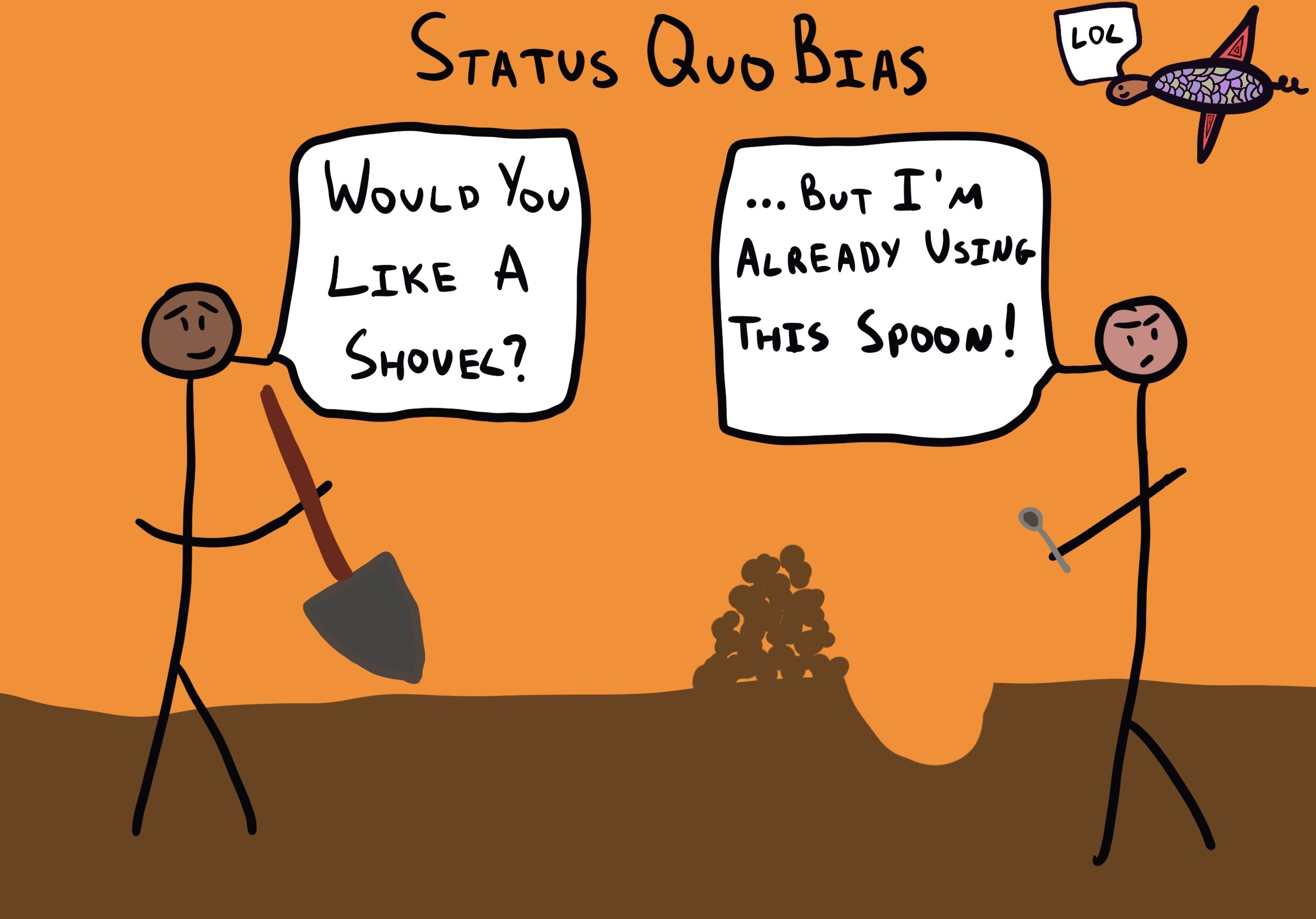Status quo bias is a cognitive bias that leads individuals to prefer keeping things the way they are or maintaining their current situation rather than making changes or taking new actions, even when the potential benefits of change outweigh the drawbacks. In essence, people often have a preference for the familiar and resist change.
Explanations:
The status quo bias is related to the concept of loss aversion, where people tend to weigh potential losses more heavily than equivalent gains. The existing state is seen as the reference point, and any deviation from it is perceived as a potential loss.
Examples:
Financial Investments: Investors may be reluctant to sell underperforming stocks or assets because they’ve held them for a long time and are attached to the familiar investment.
Career Choices: Employees might remain in unfulfilling or unsatisfying jobs simply because they’re used to the routine, rather than exploring new career opportunities.
Consumer Habits: People often stick with the same brands, products, or services they’ve used for years out of habit, even if newer or better alternatives are available.
Solutions:
Recognize the Bias: Awareness is the first step in addressing the status quo bias. Acknowledge that this bias exists and may influence your decisions.
Assess Benefits of Change: When facing a decision, consider the potential benefits of change, whether it’s in your personal life, career, or financial investments. Weigh these against the drawbacks of maintaining the status quo.
Set Clear Goals: Clearly define your goals and objectives. If a change aligns with your goals and values, it becomes easier to overcome the bias.
Experiment and Learn: Sometimes, taking small steps toward change and assessing the results can make it easier to embrace more significant changes later.
By actively challenging the status quo bias, individuals can become more open to change and better positioned to make decisions that lead to personal growth and improvement.
